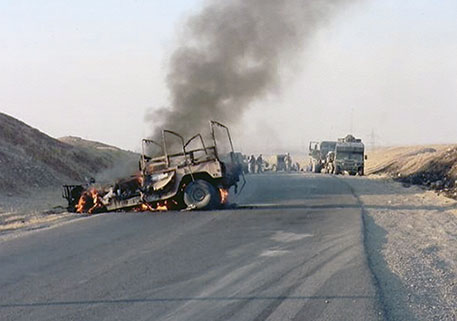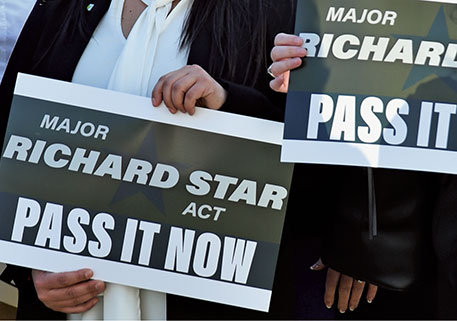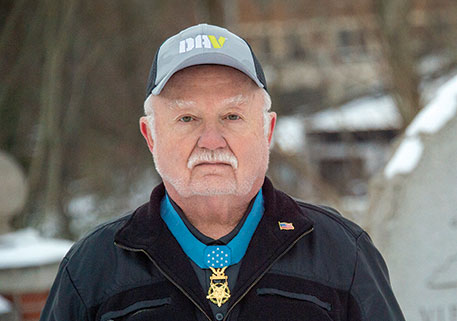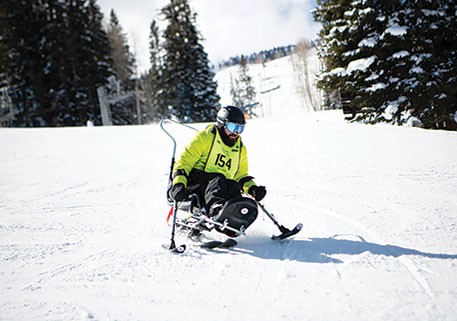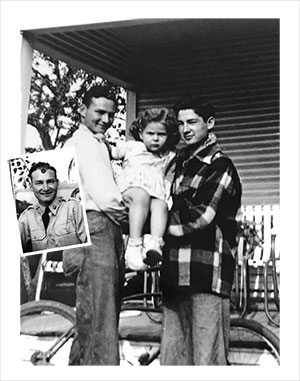
One of the last memories Women’s Army Corps veteran Patricia Hendrix has of her brother is preserved in an old black-and-white photo that she often carries with her.
In the photo, her two adult siblings, Billy and Jack Rodgers, cradle Hendrix, their 5-year-old sister, in their arms. Both men soon went on to serve in the military. Jack retired from the Navy and had a family. Billy chose the Army; his family never saw him again.
For 70 years, Sgt. Billy V. Rodgers was considered missing in action (MIA). His unit had been attacked by enemy forces in North Korea on Dec. 2, 1950, just a few months into the Korean War. When the fog of battle lifted, there was no sign of Rodgers.
Hendrix vaguely remembers her mother opening their front door and receiving the news that Rodgers was MIA. Clearer in her mind are the decades that followed as her grief-stricken mother pined for Rodgers’ return.
“Mom refused to ever accept that Billy had not survived,” Hendrix said. “She refused to believe that he was nothing but missing in action, that he would be back.”
It’s an experience that tens of thousands of American families have lived and continue to live. According to the Defense POW/MIA Accounting Agency (DPAA), more than 81,500 service members remain missing from World War II, the Korean War, the Vietnam War, the Cold War and the Gulf Wars, as well as other conflicts.
“What exacerbates the loss is the uncertainty attached to it,” said DPAA Director and retired Air Force Maj. Gen. Kelly McKeague. “Not having the mortal remains of their loved one is something that creates a void in heart and mind for these families, and that void in heart and mind carries over generationally.”
Hendrix’s mother worked at Fort Ord, California, for about 20 years. Anytime she met someone who was around at the time and place her son had served, she’d pepper them with questions. Maybe one of them had known Rodgers or had seen him since that last-known battle. She kept clinging to that hope until her death in 1976.
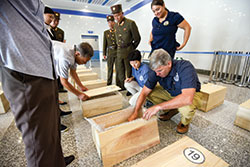
A mother’s pain passed down through generations of Hendrix’s family. Even those in the family who had never met Rodgers inherited the remnants of sorrow.
‘Back where he belongs’
Since 1973, DPAA, and its predecessors, have been helping generations of families heal. Its mission is to provide the fullest accounting of missing American service members by working tirelessly to find, identify and repatriate remains to their families. The work requires hundreds of dedicated civilians, service members and scientists and depends on international cooperation.
Some missions are harder than others. Historically, it’s been difficult and at times impossible to recover American remains in North Korea, a country with which the U.S. does not have diplomatic relations. That’s particularly problematic given that, of the remains of the more than 7,400 American Korean War service members missing in action, roughly 70% of them are presumably located in North Korea, McKeague said.
Hendrix said she had long accepted that Rodgers was killed in action. She never even considered that his remains would be found, let alone returned home. She accepted that the hole in her family’s heart was a permanent fixture.
Then, in 2018, North Korea agreed to repatriate 55 boxes of remains. It was the first cooperation of its kind since 2005. The boxes carried 501 bones, each yielding DNA that enabled DPAA to start identifying remains.
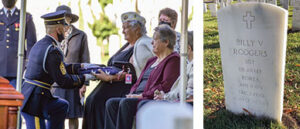
Among the 93 Americans whose remains have been identified was Billy Rodgers. DPAA scientists used anthropological analysis and circumstantial evidence to identify Rodgers’ remains. His Native American heritage and DNA samples from family helped further confirm he had finally been found.
Rodgers was officially accounted for on April 9, 2020. His remains were eventually reunited with Hendrix and the rest of his family, and he was buried in Arlington National Cemetery.
“It was like, oh my God, he’s actually home. He’s here,” Hendrix said, pushing through tears. “He’s here again. He is back where he belongs.”
Hendrix said she knew her mother was watching, proud of her son and at peace at last.
“Mom had never given up,” Hendrix said, “To be able to have him laid to rest here gave us that final closure.
“We’re family and we are all back [together].”
‘Thank you’
As a DAV member and Gold Star sibling of a former missing service member, Hendrix attended the POW/MIA seminar at the 2024 DAV and Auxiliary National Convention in Phoenix. McKeague, alongside DAV’s Interim POW/MIA Committee members, gave an update on DPAA’s work, including the identifying and repatriating of Korean War service members.
After the presentation, wearing a blue shirt as bright as the twinkle in her eyes, Hendrix raised her hand. With McKeague listening intently, Hendrix thanked him and DPAA for identifying and repatriating her beloved brother.
“I’ll never forget it,” McKeague said.
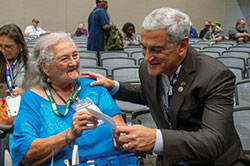
When the seminar ended, Hendrix and McKeague gravitated toward each other through a packed room. They sat side by side as Hendrix shared stories and photos, including the one of her brothers holding her as a child.
McKeague, keenly aware of how special the opportunity was, didn’t rush the moment.
“To be able to sit down with her and hear her story was absolutely powerful,” he said.
“It was amazing to me to be able to talk to him and say thank you for all the hard work that they put in finding our young men and women who have died and to identify them,” Hendrix said.
Hendrix said publicly thanking McKeague was also a way to encourage other families waiting on their loved ones who are missing in action.
“We waited a long time … and there are still families waiting,” Hendrix said. “And I don’t want them to
give up.”
To learn more about POW/MIA advocacy, visit dav.la/3il.

